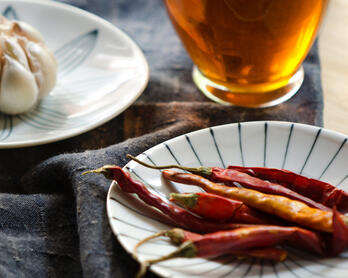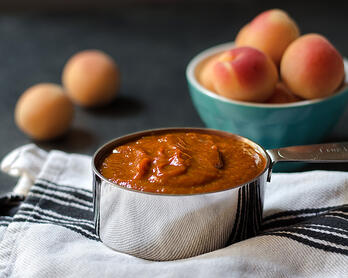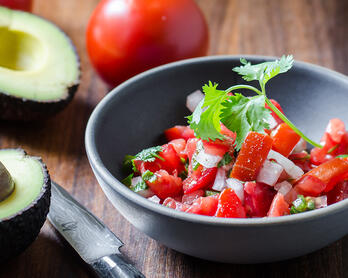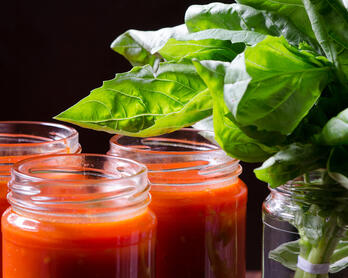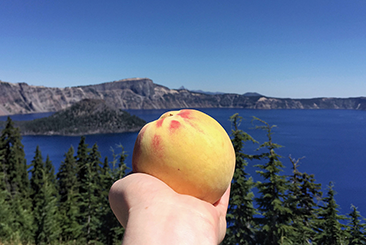Thick, Sweet, & Spicy BBQ Sauce
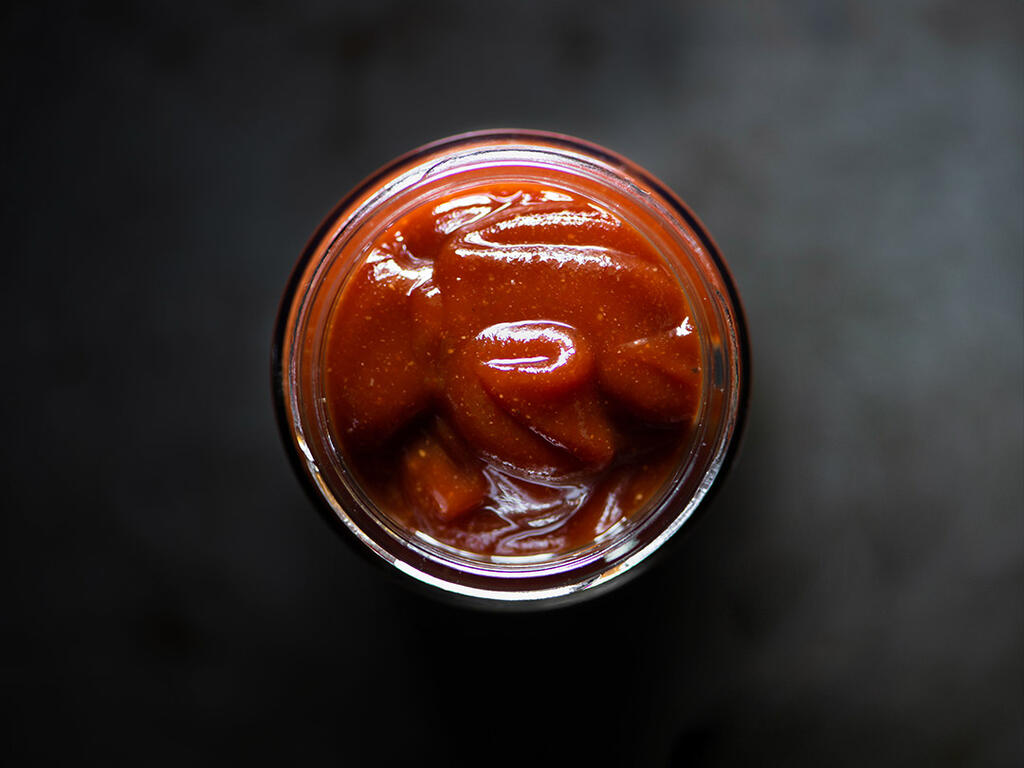
I stopped by the farmers market on July 4th to support the growers who had made the trip. After picking up some Peads & Barnetts ribs and Finley Farms potatoes for our holiday dinner, the question of sauce arose. I started flipping through my cookbooks and came across the "Sweet Barbecue Sauce" recipe in Chef Joe Carroll's Feeding the Fire. This is a Kansas City style sauce in that it's thick and slightly sweet, but I want to emphasize "slightly". The added sugar isn't nearly as high as I've seen in many KC recipes which was a bonus.
After some lazy simmering and an occasional stir, the glossy stand-at-attention business you see above was served alongside our low and slow ribs. Per the suggestion in the cookbook, I mixed some of the cooked meat juices into the barbecue sauce and am regretting all of the times I didn't think to do this in the past.
The flavor of this barbecue sauce is definitely delicious though it is quite ketchup-y and really wants those juices.That latter bit being said, this recipe is basically "gussied up ketchup" per Chef Carroll and would be fantastic as is on a burger.
Thanks to west coast produce and an east coast recipe, our 4th of July meal was a sea to shining sea success.
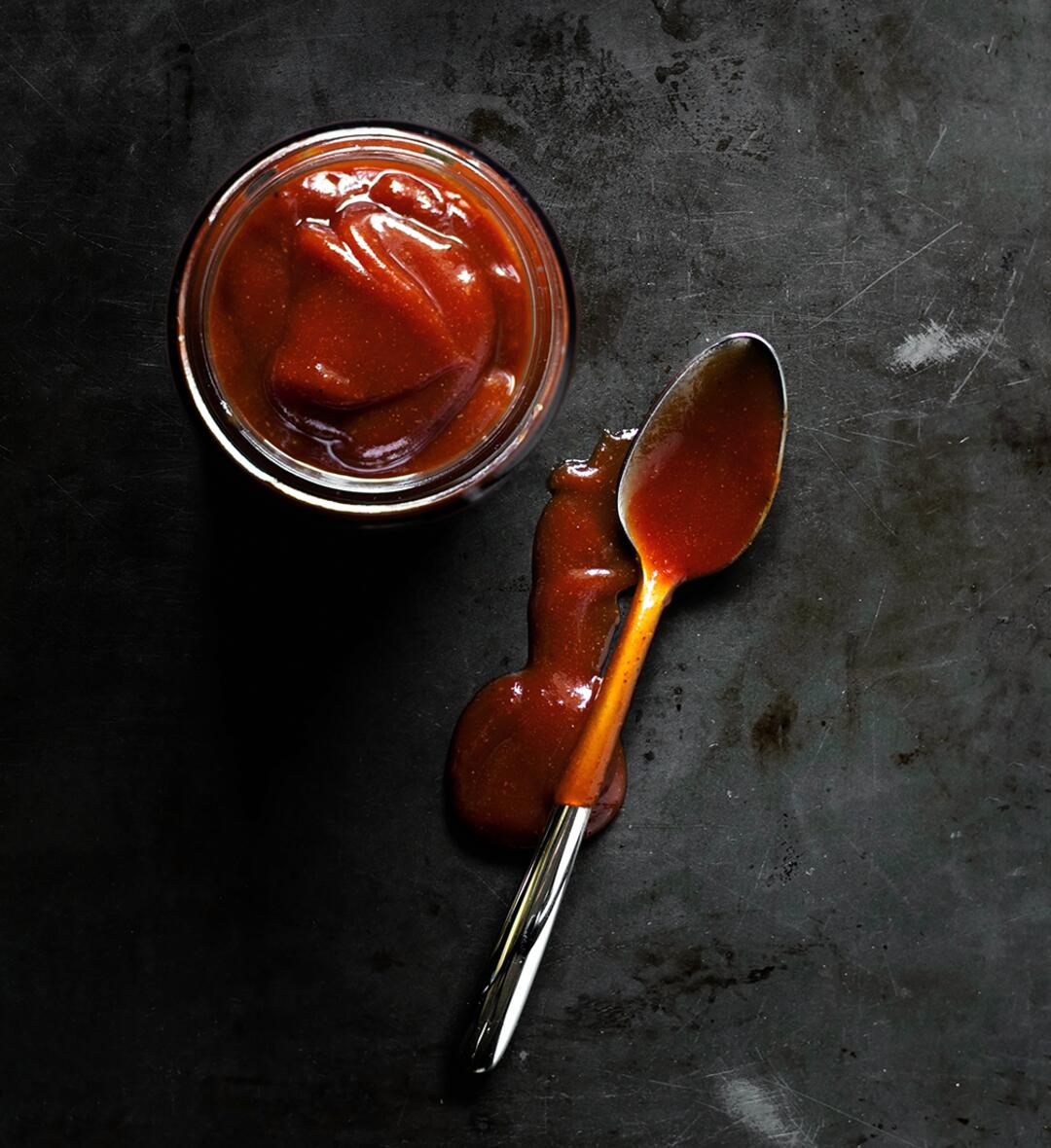
Useless Facts
The Butterfly-Mustard Arms Race
Gastropod is a great food podcast and the "Cutting the Mustard" episode in particular was full of fantastic useless facts. Since Colman's mustard is discussed by the hosts and also happens to be an ingredient in this recipe, I'm seizing the opportunity to drop some food knowledge.
A paper was published that looked at why mustard plants have gradually become spicier over the course of about 90 million years. And don't just think Dijon or the stuff you squiggle on hot dogs. Mustard, wasabi, horseradish, and other members of the Brassica family of plants share this story of evolution.
For context, the spice in mustard comes from glucosinolates which comprise the plant's defense system. While delicious to us, they're deadly toxic to bugs or other critters that might be looking for dinner. That is, unless you're a cabbage butterfly. As mustard plants built up sufficient defense toxins that allowed them to flourish, caterpillars then evolved an ability to consume said toxins. So began the spicy arms race. The paper's author, Patrick Edger, continues:
"The insects evolved an enzyme, a novel enzyme - a brand new gene - that actually cleaves the glucosinolates and makes the chemical compound an inert structure. And here’s one of my favorite points in this whole research: this arms race led to amazing success for both insects and plants. As the war went on, it actually created many, many new species of both Brassica and butterflies. Both dramatically increased in biodiversity and habitat. It is at least partly due to this arms race that we have kale and collards and cauliflower and brussels sprouts and horseradish and radishes and mustard and everything."
This process is referred to as coevolutionary interactions. Over million of years, the scientists saw at least three cycles of this back and forth between mustard plants and butterflies. Not only can cabbage butterflies detoxify glucosinolates, but they then turn it into a defense chemical of their own that makes them taste unpleasant to birds. Mother Nature will always be the queen.
Bringing things back around to the barbecue sauce recipe and Colman's mustard, Chef Carroll and the folks on Gastropod emphatically suggest that the punch of Colman's can't be replaced with another brand. It's a blend of white and brown mustard seeds, the latter giving you that fantastic kick in the sinuses. You should put a tin in your pantry.
If you want to learn more about how the mustard seeds are actually toxic to the plant itself or how the plants pass on multiple copies of their genome to give the next geration "options to play with", I encourage you to listen to the entire Gastropod episode.
Recipe Tips
Make Ahead
As with many sauces and stews, I recommend making this recipe at least a day in advance so the flavors have time to marry up. I made and used this barbecue sauce on the same day so you can definitely do that in a pinch.
Meat Juices
Adding some juices from the cooked meat is a game changer but it also shortens the shelf life if there are leftovers. In my case, I portioned out what I needed for the meal, added the juices (to taste), and then put the rest of the unaltered sauce in the refrigerator. In the future, I'll probably add the juices to the entire batch of barbecue sauce and freeze what I don't plan to use in the coming days.
Mustard
As mentioned in "Useless Facts", I've heard from more than one culinary source that the punch of Colman's cannot be replaced by a different brand. Don't sub an alternate mustard powder if you can avoid it.
Splatter Guard
You want to use one. If you cover the sauce with a lid, it won't reduce and thicken properly. If you leave the simmering sauce uncovered without a splatter guard, your nearby pots, backsplash, and stove will end up covered in sticky dots.
Immersion Blender
In the pictures you'll notice little flecks of mustard powder. When I make this recipe again, I'll probably whiz it with an immersion blender to try and break those up.
Original vs. Adapted
Sugar
Many Kansas City style recipes call for molasses but this recipe doesn't. I added a little muscavado sugar at the end but this isn't neccessary if the sauce is sweet enough for you. On that note, muscavado sugar has a deep molasses flavor so I may try using in lieu of dark brown sugar the next go around. Chef's discretion.
Farmers | Artisans
I discovered Bourbon Barrel Foods at Shed in Healdsburg and have since tried their barrel aged soy and Worcestershire sauces. I now keep both stocked in the refrigerator. The company sells small bottles if you're not ready to make a big commitment but want to give these artisanal ingredients a try.
Tools
- Medium Non-Reactive Pot
- Splatter Guard
- Immersion Blender (optional) // My Cuisinart immersion blender died after giving me many good years. I immediately ordered the updated model and discovered that Cuisinart had changed the design such that you have to press two buttons to turn it on and then "unlock it" every time you take your finger off the run button. The Breville model was suggested to me as an alternative and I really like it so far. Easy to use and clean.
Ingredients (From Feeding the Fire - Makes About 2 Cups)
- 2 cups organic ketchup
- 3 tablespoons Worcestershire
- 2 tablespoons cider vinegar
- 2 tablespoons hard cider
- 2 tablespoons pilsner beer
- 2 tablespoons dark brown sugar
- 2 teaspoons Colman's mustard powder
- 1/2 teaspoon garlic powder
- 1/2 teaspoons cayenne pepper
- 1 teaspoon kosher salt
Instructions
- In a medium non-reactive pot, combine all of the ingredients and stir thoroughly.
- Bring the mixture to a lazy simmer, cover with a splatter guard, and cook for 45 minutes to 1 1/2 hours (I went with the latter). Stir from time to time.
- The color of the sauce will darken and the flavors should be relatively cohesive. Note: It helps to taste the mixture at the beginning so that you have a point of reference.
- Add cooked meat juices to taste.
- Refrigerate in an airtight container or freeze. If you've added meat juices to the sauce, freeze within a couple of days.
